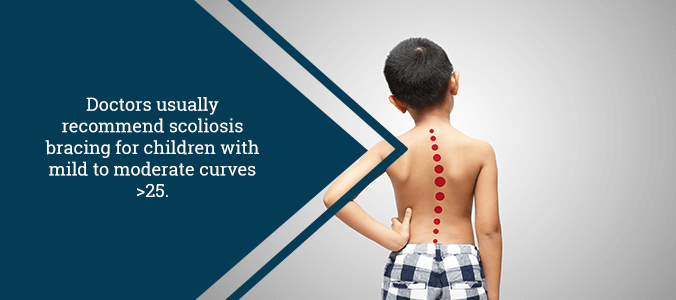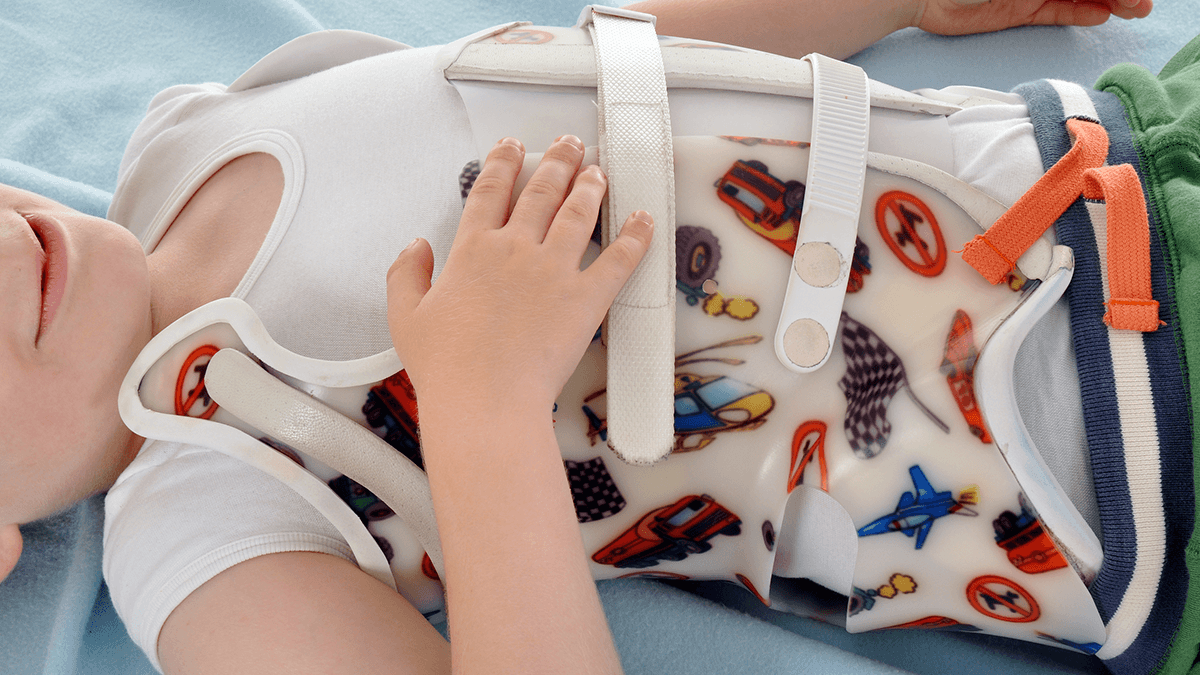Is Scoliosis Bracing Right for Your Child?
Scoliosis is a condition that leads to the sideways curvature of the spine. Usually, this occurs during the growth spurt right before puberty. Sometimes, pre-existing ailments such as muscular dystrophy or cerebral palsy lead to scoliosis. That being said, the cause of scoliosis in most cases is unknown.
Most instances of scoliosis are mild. And, some patients even report no painful symptoms at all. However, while this may be, if left unaddressed the curves will almost always worsen with time. Severe scoliosis is life-altering, especially when the curve reduces the amount of space within the chest. Such situations can cause the patient to experience difficulty breathing.
Doctors may give children and teens with scoliosis a brace to prevent their spinal curve from worsening. Usually, doctors prescribe braces for children and teens whose spinal curves are more than 25 degrees. This is especially so if the patient is still growing.
Firstly, your doctor will need to know if your child has reached skeletal maturity yet. In order to determine this, your doctor will use what medical experts refer to as the Risser sign. The Risser sign uses x-ray imaging to measure how much mature bone has formed in the upper rim of the pelvic space. It assesses this on a scale from 0 to 5. If your doctor determines that your child is a 5 on the Risser scale, then your doctor will not consider bracing as skeletal maturity has already been achieved.

Scoliosis Causes & Risk Factors
Doctors don’t always know what leads to scoliosis in patients. (In fact, this is what the “idiopathic” means in idiopathic scoliosis.) That being said, scoliosis often does appear to be hereditary, seeing as the disorder tends to run down family lines. Other common causes of scoliosis include:
- Spinal injuries or infections
- Birth defects involving the spine
- Neuromuscular problems, such as muscular dystrophy
These are just a few possibilities, however. There is a good chance that this list actually extends much, much longer. Although that may be the case, the above few examples can be contributing factors to the disease.
Speaking of contributing factors, the generally agreed-upon risk factors for developing scoliosis also include:
- Sex: As far as development goes, gender does not really play a role. That being said, gender does often predict whether the condition will worsen. Girls have a much higher chance of their scoliosis curves reaching the “severe” range than do boys.
- Age: Usually, scoliosis manifests itself during the growth spurt right before puberty.
- Family History:Simply put, scoliosis tends to run in families.
Other than these few factors and theories, however, scoliosis is still very much a mystery in the world of modern medicine.
Scoliosis: Bracing Basics
Whether or not your child will need a scoliosis brace depends on the type and location of their spinal curvature. The most common brace that doctors prescribe is the Boston Brace, which is custom-made by using molds of the patient’s body. The brace uses the hip as a foundation and extends up to the shoulder blades. It is designed especially to keep the lower part of the spine in a flexed position through pushing in at designated pressure points. Depending on your doctor’s orders, the brace may need to be worn for 16-23 hours a day.
The most important aspect about scoliosis bracing is compliance and establishing a support circle. Your doctor will encourage you to bring family members and/or friends to a brace appointment. Feeling supported will ultimately help the pediatric patient to stick to the plan of care.
Unfortunately, sometimes scoliosis curves may get worse despite bracing. This occurs, however, only in a small percentage of cases. Because of this, it is still highly important to have close follow-ups with an orthopedic specialist, as well as regular x-rays to ensure that the bracing process goes smoothly. Sometimes, these diagnostics will reveal vital information, such as whether or not your doctor will need to perform surgery in addition to bracing.

Scoliosis: The Bracing Process
All bracing journeys begin with a visit to an orthopedist or orthotist. This specialist will evaluate your child’s curve and review with you the goals of your treatment plan. Usually, your orthopedic specialist has already chosen an appropriate brace that your child will need to wear. The orthotist is then responsible for taking the measurements and molds that will be needed to give your child’s brace a custom fit.
Once the brace has been made, you will have a first-time fitting appointment with your orthotist. Here, micro-adjustments are made to ensure that your child’s brace fits him or her perfectly. Additionally, you will be given instructions on how to care for your child’s brace.
It often takes several days to ease into the schedule of wearing a brace full-time. The following is a good method that doctors recommend to patients for getting used to this process:
- The First Day: The child should wear the brace for 2 hours.
- The Second Day: The child should now wear the brace for 4 hours if feasible. If not, this should be broken up into shorter increments.
- The Third Day: The child should wear the brace for 6 hours.
- The Fourth Day: The child should wear the brace for 8 hours.
- The Fifth Day: The child should now start to wear the brace for the amount of time that the doctor initially prescribed.
After two weeks, your orthotist will schedule a follow-up with you and your child. This will be used as a chance to check the fit of the brace, as well as any other issues that may need to be addressed. A week after this initial follow-up, your doctor may also take x-ray images to make sure that the brace is functioning correctly.

Scoliosis: Wearing the Brace
A Boston Brace is easily concealed under loose-fitting clothing. At first, this will feel uncomfortable, but after a while, your child will come to get used to it. It is important to clean the foam liner of the brace as often as possible (preferably daily). This should be done using rubbing alcohol, which will help to disinfect the liner from bacteria and sweat.
Your doctor will teach you and your child how to wear the brace properly. There are general guidelines that he or she may give, which are as follows:
- All straps must be outside the brace.
- Place the brace around the body by holding each side and pulling it open so that your child can twist into it. The brace may be stiff at first, so you will most likely need to offer your assistance.
- The opening of the brace should be centered on your child’s back. The bumps of the spine should line up with the middle of the brace’s opening.
- Press the brace down by placing your hands on your child’s hips. The waist pads on the inside should rest just above your child’s hips.
- Get your child to rest their forearms on a table or counter and lean forward. This will make it much easier for the helper (you) to thread the straps through the buckles.
- On the opposite side of the buckle, you should apply pressure with your hand. Simultaneously, you will pull the strap toward the opposite side.
- Now, all you need to do is secure the middle strap first, the bottom straps second, and the top straps third. Now your child can stand up straight.
Contact Us
If you or your child have scoliotic curves, please contact us at (855) 220-5966. Dr. Jason Lowenstein is a leading expert in the field of scoliosis and spinal deformity care. He will ensure that you or your child will be put on the individualized care plan that best suits your specific needs.
